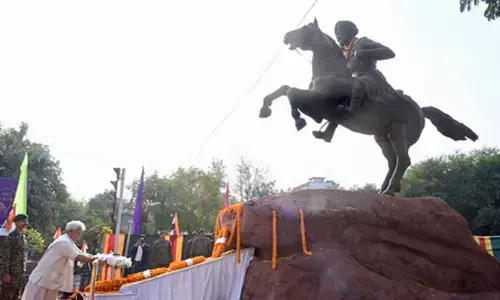Discharge of untreated industrial effluents, major source of 351 polluted rivers: Mahesh Sharma

Discharge of untreated and partially treated industrial effluents and sewage from cities is a major source of pollution in 323 rivers, the Lok Sabha was told on Friday
New Delhi: Discharge of untreated and partially treated industrial effluents and sewage from cities is a major source of pollution in 323 rivers, the Lok Sabha was told on Friday.
Citing a Central Pollution Control Board (CPCB) report published in September 2018, Minister of State for Environment Mahesh Sharma said 351 polluted river stretches have been identified on 323 rivers based on Biochemical Oxygen Demand (BOD) levels, a key indicator of pollution.
He said the major source of pollution in these rivers is discharge of untreated and partially treated industrial effluents and sewage from cities.
As per the Hazardous and Other Wastes (Management and Transboundary Movement) Rules, 2016, notified under the Environment (Protection) Act, 1986, industrial hazardous wastes are required to be disposed of in an environmentally sound manner.
"Compliance with these rules is monitored by the CPCB and SPCBs (state pollution control boards) or PCCs (pollution control committees) and action is taken in cases of violation by industries.
With respect to the industries in Delhi, regular inspections are undertaken by Delhi Pollution Control Committee to ensure compliance," Sharma said in a written reply.
The steps taken by the government, in addition to the notification of the aforesaid rules, to implement environmentally sound management of hazardous wastes, inter alia, include availability of 42 common hazardous waste treatment, storage and disposal facilities (TSDFs) in 18 states and union territories.
Other steps include establishment of 1,733 authorised recyclers of commonly recyclable hazardous wastes having authorized capacity of 6.
99 million tonnes, permission for 65 cement plants for co-processing, development of 224 facilities for utilisation of various categories of hazardous waste as a resource for energy recovery and development of guidelines and manuals for hazardous waste management in various industrial sectors among others.
Sharma said the CPCB has developed 46 Standard Operating Procedures (SoPs) to enable waste processing industries to utilise various streams of hazardous wastes such as spent solvent, spent catalyst, vanadium sludge, coal tar, aluminium dross, phenolic waste water and spent carbon.

















